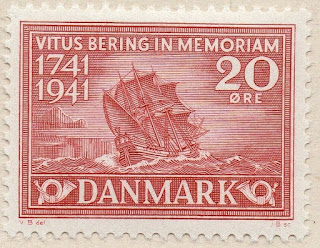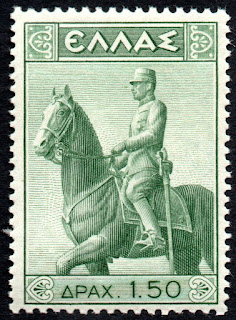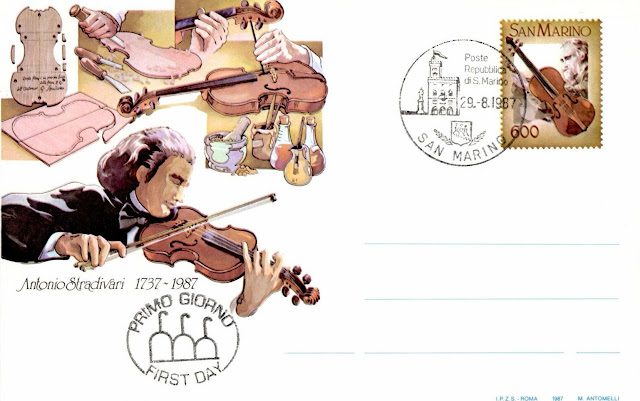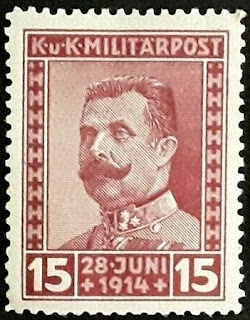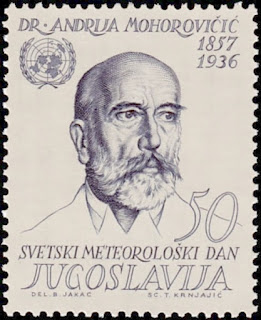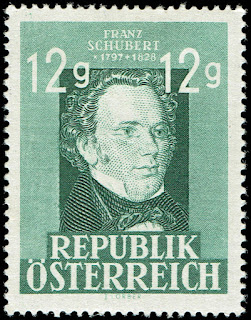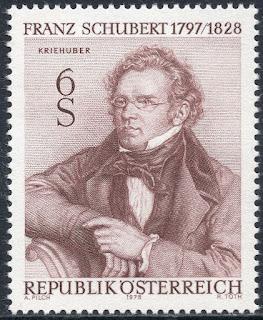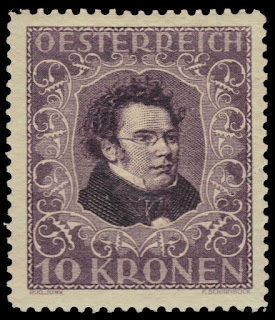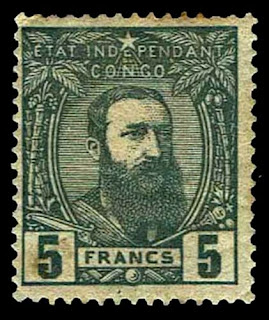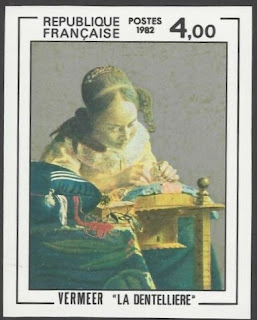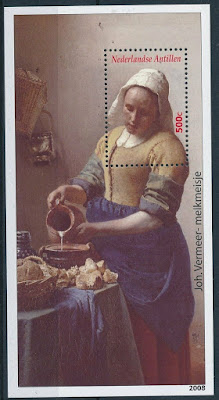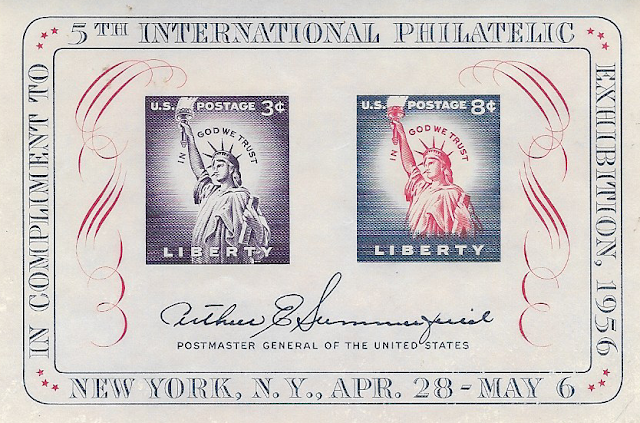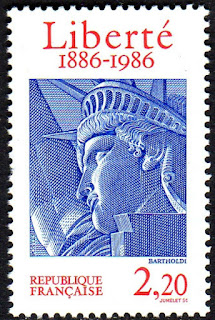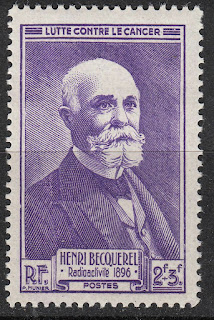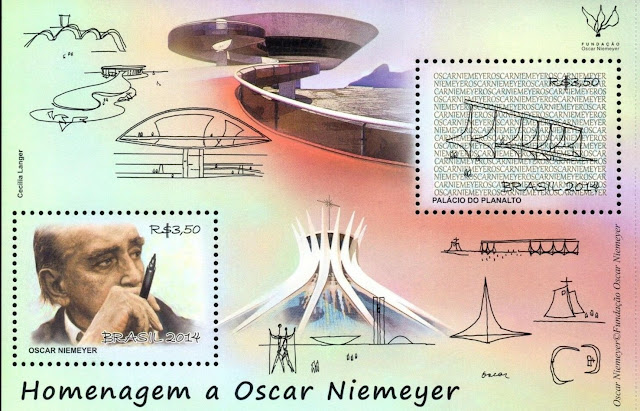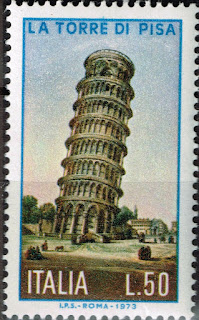Here are some events that happened on December 19th. It could be an event or a person that died or was born on that day
1741 Died: Vitus Bering, Danish-Russian hydrographer and explorer (b. 1681)
Vitus Jonassen Bering (baptised 5 August 1681, died 19 December 1741), also known as Ivan Ivanovich Bering, was a Danish cartographer and explorer in Russian service, and an officer in the Russian Navy. He is known as a leader of two Russian expeditions, namely the First Kamchatka Expedition and the Great Northern Expedition, exploring the north-eastern coast of the Asian continent and from there the western coast on the North American continent. The Bering Strait, the Bering Sea, Bering Island, the Bering Glacier and the Bering Land Bridge were all named in his honor.
Taking to the seas at the age of 18, Bering travelled extensively over the next eight years, as well as taking naval training in Amsterdam. In 1704, he enrolled with the rapidly expanding Russian navy of Tsar Peter I (Peter the Great). After serving with the navy in significant but non-combat roles during the Great Northern War, Bering resigned in 1724 to avoid the continuing embarrassment of his low rank to Anna, his wife of eleven years; and upon retirement was promoted to First Captain. Bering was permitted to keep the rank as he rejoined the Russian navy later the same year.
He was selected by the Tsar to captain the First Kamchatka Expedition, an expedition set to sail north from Russian outposts on the Kamchatka peninsula, with the charge to map the new areas visited and to establish whether Asia and America shared a land border. Bering departed from St. Petersburg in February 1725 as the head of a 34-man expedition, aided by the expertise of Lieutenants Martin Spangberg and Aleksei Chirikov. The party took on men as it headed towards Okhotsk, encountering many difficulties (most notably a lack of food) before arriving at the settlement. From there, the men sailed to the Kamchatka peninsula, preparing new ships there and sailing north (repeating a little-documented journey of Semyon Dezhnyov eighty years previously). In August 1728, Bering decided that they had sufficient evidence that there was clear sea between Asia and America, which he did not sight during the trip. For the first expedition, Bering was rewarded with money, prestige, and a promotion to the noble rank of Captain Commander. He immediately started preparations for a second trip.
Having returned to Okhotsk with a much larger, better prepared, and much more ambitious expedition, Bering set off for an expedition towards North America in 1741. While doing so, the expedition spotted Mount Saint Elias, and sailed past Kodiak Island. A storm separated the ships, but Bering sighted the southern coast of Alaska, and a landing was made at Kayak Island or in the vicinity. Adverse conditions forced Bering to return, but he documented some of the Aleutian Islands on his way back. One of the sailors died and was buried on one of these islands, and Bering named the island group Shumagin Islands after him. Bering himself became too ill to command his ship, which was at last driven to seek refuge on an uninhabited island in the Commander Islands group (Komandorskiye Ostrova) in the southwest Bering Sea. On 19 December 1741 Vitus Bering died on the island, which was given the name Bering Island after him, near the Kamchatka Peninsula, reportedly from scurvy (although this has been contested), along with 28 men of his company.
Stamps from Russia and Denmark depicting Bering and the Bering Sea
1915 Died: Alois Alzheimer, German psychiatrist and neuropathologist (b. 1864)
Aloysius Alzheimer (also known as Alois Alzheimer; June 14, 1864 – December 19, 1915) was a German psychiatrist and neuropathologist and a colleague of Emil Kraepelin. Alzheimer is credited with identifying the first published case of "presenile dementia", which Kraepelin would later identify as Alzheimer's disease.
Alzheimer discussed his findings on the brain pathology and symptoms of presenile dementia publicly on 3 November 1906, at the Tübingen meeting of the Southwest German Psychiatrists. The attendees at this lecture seemed uninterested in what he had to say. The lecturer that followed Alzheimer was to speak on the topic of "compulsive masturbation", which the audience was so eagerly awaiting that they sent Alzheimer away without any questions or comments on his discovery of the pathology of a type of senile dementia.
Following the lecture, Alzheimer published a short paper summarizing his lecture; in 1907 he wrote a larger paper detailing the disease and his findings. The disease would not become known as Alzheimer's disease until 1910, when Kraepelin named it so in the chapter on "Presenile and Senile Dementia" in the 8th edition of his Handbook of Psychiatry. By 1911, his description of the disease was being used by European physicians to diagnose patients in the US.
Stamps from USA, Denmark and Spain issued to raise awareness to Alzheimer's disease
1920 – King Constantine I is restored as King of the Hellenes after the death of his son Alexander of Greece and a plebiscite.
Constantine I (2 August 1868 – 11 January 1923) was King of Greece from 1913 to 1917 and from 1920 to 1922. He was commander-in-chief of the Hellenic Army during the unsuccessful Greco-Turkish War of 1897 and led the Greek forces during the successful Balkan Wars of 1912–1913, in which Greece expanded to include Thessaloniki, doubling in area and population. He succeeded to the throne of Greece on 18 March 1913, following his father's assassination.
His disagreement with Eleftherios Venizelos over whether Greece should enter World War I led to the National Schism. Constantine forced Venizelos to resign twice, but in 1917 he left Greece, after threats by the Entente forces to bombard Athens; his second son, Alexander, became king. After Alexander's death, Venizelos' defeat in the 1920 legislative elections, and a plebiscite in favor of his return, Constantine was reinstated. He abdicated the throne for the second and last time in 1922, when Greece lost the Greco-Turkish War of 1919–1922, and was succeeded by his eldest son, George II. Constantine died in exile four months later, in Sicily.
Greek stamps depicting Constantine I
1906 Born: Leonid Brezhnev, Ukrainian-Russian marshal, engineer, and politician, 4th Head of State of the Soviet Union (d. 1982)
Leonid Ilyich Brezhnev (19 December 1906 – 10 November 1982) was a Soviet politician. The fifth leader of the Soviet Union, he served as General Secretary of the Central Committee of the governing Communist Party of the Soviet Union (CPSU) from 1964 until his death in 1982. His 18-year term as general secretary was second only to Joseph Stalin's in duration. While Brezhnev's rule was characterized by political stability and notable foreign policy successes, it was also marked by corruption, inefficiency, and rapidly growing technological gaps with the West.
Brezhnev's conservative, pragmatic approach to leadership significantly stabilized the position of the Soviet Union and its ruling party. Whereas Khrushchev routinely disregarded the rest of the Politburo while exercising his authority, Brezhnev was careful to minimize dissent among the Party membership by reaching decisions through consensus. Additionally, while pushing for détente between the two Cold War superpowers, he achieved Soviet nuclear parity with the United States and legitimized his country's hegemony over Eastern Europe. Furthermore, the massive arms buildup and widespread military interventionism under Brezhnev's regime significantly expanded the Soviet Union's global influence (particularly in the Middle East and Africa).
Conversely, Brezhnev's hostility to political reform ushered in an era of societal decline known as the Brezhnev Stagnation. In addition to pervasive corruption and falling economic growth, this period was characterized by an increasing technological gap between the Soviet Union and the West. Upon coming to power in 1985, Mikhail Gorbachev denounced Brezhnev's government for its pervasive inefficiency and inflexibility before implementing policies to liberalize the Soviet Union.
After 1975, Brezhnev's health rapidly deteriorated and he increasingly withdrew from international affairs. Following years of declining health, he died on 10 November 1982 and was succeeded as general secretary by Yuri Andropov.
Stamps from Russia and East Germany depicting Leonid Brezhnev
Thursday, December 19, 2019
Wednesday, December 18, 2019
December 18th in stamps Stradivari, Franz Ferdinand, Stalin, Brandt, Mohorovicic
Here are some events that happened on December 18th. It could be an event or a person that died or was born on that day
1737 Died: Antonio Stradivari, Italian instrument maker (b. 1644)
Antonio Stradivari (1644 – 18 December 1737) was an Italian luthier and a crafter of string instruments such as violins, cellos, guitars, violas, and harps. The Latinized form of his surname, Stradivarius, as well as the colloquial Strad are terms often used to refer to his instruments. It is estimated that Stradivari produced 1,116 instruments, 960 of which were violins. Around 650 instruments survived, including 450 to 512 violins.
Stamps from Italy and San Marino depicting Antonio Stradivari
1863 Born: Archduke Franz Ferdinand of Austria (d. 1914)
Archduke Franz Ferdinand Carl Ludwig Joseph Maria of Austria (18 December 1863 – 28 June 1914) was the heir presumptive to the throne of Austria-Hungary. His assassination in Sarajevo precipitated Austria-Hungary's declaration of war against Serbia, which in turn triggered a series of events that eventually led to Austria-Hungary's allies and Serbia's declaring war on each other, starting World War I.
Bosnian stamps issued in 1917 depicting Franz Ferdinand
1878 Born: Joseph Stalin, Georgian-Russian marshal and politician, 4th Premier of the Soviet Union (d. 1953)
Joseph Vissarionovich Stalin (18 December 1878 – 5 March 1953) was a Georgian revolutionary and Soviet politician who led the Soviet Union from the mid–1920s until 1953 as the general secretary of the Communist Party of the Soviet Union (1922–1952) and premier of the Soviet Union (1941–1953). Despite initially governing the Soviet Union as part of a collective leadership, he eventually consolidated power to become the country's de facto dictator by the 1930s. A communist ideologically committed to the Leninist interpretation of Marxism, Stalin formalised these ideas as Marxism–Leninism, while his own policies are known as Stalinism.
Born to a poor family in Gori in the Russian Empire (now Georgia), Stalin joined the Marxist Russian Social Democratic Labour Party as a youth. He edited the party's newspaper, Pravda, and raised funds for Vladimir Lenin's Bolshevik faction via robberies, kidnappings, and protection rackets. Repeatedly arrested, he underwent several internal exiles. After the Bolsheviks seized power during the 1917 October Revolution and created a one-party state under Lenin's newly renamed Communist Party, Stalin joined its governing Politburo. Serving in the Russian Civil War before overseeing the Soviet Union's establishment in 1922, Stalin assumed leadership over the country following Lenin's 1924 death. Under Stalin, "Socialism in One Country" became a central tenet of the party's dogma. Through the Five-Year Plans, the country underwent agricultural collectivisation and rapid industrialisation, creating a centralised command economy. This led to significant disruptions in food production that contributed to the famine of 1932–33. To eradicate accused "enemies of the working class", Stalin instituted the "Great Purge", in which over a million were imprisoned and at least 700,000 executed between 1934 and 1939. By 1937, he had complete personal control over the party and state.
Stalin's government promoted Marxism–Leninism abroad through the Communist International and supported European anti-fascist movements during the 1930s, particularly in the Spanish Civil War. In 1939, it signed a non-aggression pact with Nazi Germany, resulting in the Soviet invasion of Poland. Germany ended the pact by invading the Soviet Union in 1941. Despite initial setbacks, the Soviet Red Army repelled the German incursion and captured Berlin in 1945, ending World War II in Europe. The Soviets annexed the Baltic states and helped establish Soviet-aligned governments throughout Central and Eastern Europe, China, and North Korea. The Soviet Union and the United States emerged from the war as global superpowers. Tensions arose between the Soviet-backed Eastern Bloc and U.S.-backed Western Bloc which became known as the Cold War. Stalin led his country through the post-war reconstruction, during which it developed a nuclear weapon in 1949. In these years, the country experienced another major famine and an anti-semitic campaign peaking in the doctors' plot. After Stalin's death in 1953 he was eventually succeeded by Nikita Khrushchev, who denounced his predecessor and initiated the de-Stalinisation of Soviet society.
Widely considered one of the 20th century's most significant figures, Stalin was the subject of a pervasive personality cult within the international Marxist–Leninist movement which revered him as a champion of the working class and socialism. Since the dissolution of the Soviet Union in 1991, Stalin has retained popularity in Russia and Georgia as a victorious wartime leader who established the Soviet Union as a major world power. Conversely, his totalitarian government has been widely condemned for overseeing mass repressions, ethnic cleansing, deportations, hundreds of thousands of executions, and famines which killed millions.
Stamps from Russia and China depicting Stalin
1913 Born: Willy Brandt, German politician, 4th Chancellor of Germany, Nobel Prize laureate (d. 1992)
Willy Brandt (18 December 1913 – 8 October 1992) was a German statesman who was leader of the Social Democratic Party of Germany (SPD) from 1964 to 1987 and served as Chancellor of the Federal Republic of Germany (West Germany) from 1969 to 1974. He was awarded the Nobel Peace Prize in 1971 for his efforts to strengthen cooperation in western Europe through the EEC and to achieve reconciliation between West Germany and the countries of Eastern Europe. He was the first Social Democrat chancellor since 1930.
Fleeing to Norway and then Sweden during the Nazi regime and working as a left-wing journalist, he took the name Willy Brandt as a pseudonym to avoid detection by Nazi agents, and then formally adopted the name in 1948. Brandt was originally considered one of the leaders of the right wing of the SPD, and earned initial fame as Governing Mayor of West Berlin. He served as Foreign Minister and as Vice Chancellor in Kurt Georg Kiesinger's cabinet, and became chancellor in 1969. As chancellor, he maintained West Germany's close alignment with the United States and focused on strengthening European integration in western Europe, while launching the new policy of Ostpolitik aimed at improving relations with Eastern Europe. Brandt was controversial on both the right wing, for his Ostpolitik, and on the left wing, for his support of American policies, including the Vietnam War, and right-wing authoritarian regimes. The Brandt Report became a recognised measure for describing the general North-South divide in world economics and politics between an affluent North and a poor South. Brandt was also known for his fierce anti-communist policies at the domestic level, culminating in the Radikalenerlass (Anti-Radical Decree) in 1972.
Brandt resigned as chancellor in 1974, after Günter Guillaume, one of his closest aides, was exposed as an agent of the Stasi, the East German secret service.
German stamps depicting Willy Brandt
1936 Died: Andrija Mohorovičić, Croatian meteorologist and seismologist (b. 1857)
Andrija Mohorovičić (23 January 1857 – 18 December 1936) was a Croatian meteorologist and seismologist. He is best known for the eponymous Mohorovičić discontinuity and is considered as one of the founders of modern seismology.
On 8 October 1909 there was an earthquake with its epicentre in the Pokuplje region, 39 km southeast of Zagreb. A number of seismographs had been installed beforehand and these provided invaluable data, upon which he made new discoveries. He concluded that when seismic waves strike the boundary between different types of material, they are reflected and refracted, just as light is when striking a prism, and that when earthquakes occur, two waves—longitudinal and transverse—propagate through the soil with different velocities. By analyzing data from more observation posts, Mohorovičić concluded that the Earth has several layers above a core. He was the first to establish, based on the evidence from seismic waves, the discontinuity that separates the Earth's crust from its mantle. This is now called the Mohorovičić discontinuity or (because of the complexity of that name) Moho. According to Mohorovičić, a layered structure would explain the observation of depths where seismic waves change speed and the difference in chemical composition between rocks from the crust and those from the mantle. From the data, he estimated the thickness of the upper layer (crust) to be 54 km. We know today that the crust is 5–9 km below the ocean floor and 25–60 km below the continents, which are carried on tectonic plates. Subsequent study of the Earth's interior confirmed the existence of the discontinuity under all continents and oceans.
Mohorovičić assumed that the velocity of seismic waves increases with the depth. The function he proposed to calculate the velocity of seismic waves is called the Mohorovičić law. He developed a method for determining earthquake epicenters and constructed curves giving the travel times of seismic waves over distances of up to 10,000 miles from the source. He also proposed the construction of a new type of seismograph for recording the ground horizontal movement, but due to lack of funds the project was never realized.
As early as 1909 Mohorovičić started giving lectures that both architects and building contractors should follow, ahead of his time setting some of the basic principles of earthquake-resistant design. Mohorovičić's theories were visionary and were only truly understood many years later from detailed observations of the effects of earthquakes on buildings, deep focus earthquakes, locating earthquake epicenters, Earth models, seismographs, harnessing the energy of the wind, hail defence and other related elements of the geological body of knowledge known as geoscience.
Yugoslavian stamp depicting Mohorovičić
1737 Died: Antonio Stradivari, Italian instrument maker (b. 1644)
Antonio Stradivari (1644 – 18 December 1737) was an Italian luthier and a crafter of string instruments such as violins, cellos, guitars, violas, and harps. The Latinized form of his surname, Stradivarius, as well as the colloquial Strad are terms often used to refer to his instruments. It is estimated that Stradivari produced 1,116 instruments, 960 of which were violins. Around 650 instruments survived, including 450 to 512 violins.
1863 Born: Archduke Franz Ferdinand of Austria (d. 1914)
Archduke Franz Ferdinand Carl Ludwig Joseph Maria of Austria (18 December 1863 – 28 June 1914) was the heir presumptive to the throne of Austria-Hungary. His assassination in Sarajevo precipitated Austria-Hungary's declaration of war against Serbia, which in turn triggered a series of events that eventually led to Austria-Hungary's allies and Serbia's declaring war on each other, starting World War I.
Bosnian stamps issued in 1917 depicting Franz Ferdinand
1878 Born: Joseph Stalin, Georgian-Russian marshal and politician, 4th Premier of the Soviet Union (d. 1953)
Joseph Vissarionovich Stalin (18 December 1878 – 5 March 1953) was a Georgian revolutionary and Soviet politician who led the Soviet Union from the mid–1920s until 1953 as the general secretary of the Communist Party of the Soviet Union (1922–1952) and premier of the Soviet Union (1941–1953). Despite initially governing the Soviet Union as part of a collective leadership, he eventually consolidated power to become the country's de facto dictator by the 1930s. A communist ideologically committed to the Leninist interpretation of Marxism, Stalin formalised these ideas as Marxism–Leninism, while his own policies are known as Stalinism.
Born to a poor family in Gori in the Russian Empire (now Georgia), Stalin joined the Marxist Russian Social Democratic Labour Party as a youth. He edited the party's newspaper, Pravda, and raised funds for Vladimir Lenin's Bolshevik faction via robberies, kidnappings, and protection rackets. Repeatedly arrested, he underwent several internal exiles. After the Bolsheviks seized power during the 1917 October Revolution and created a one-party state under Lenin's newly renamed Communist Party, Stalin joined its governing Politburo. Serving in the Russian Civil War before overseeing the Soviet Union's establishment in 1922, Stalin assumed leadership over the country following Lenin's 1924 death. Under Stalin, "Socialism in One Country" became a central tenet of the party's dogma. Through the Five-Year Plans, the country underwent agricultural collectivisation and rapid industrialisation, creating a centralised command economy. This led to significant disruptions in food production that contributed to the famine of 1932–33. To eradicate accused "enemies of the working class", Stalin instituted the "Great Purge", in which over a million were imprisoned and at least 700,000 executed between 1934 and 1939. By 1937, he had complete personal control over the party and state.
Stalin's government promoted Marxism–Leninism abroad through the Communist International and supported European anti-fascist movements during the 1930s, particularly in the Spanish Civil War. In 1939, it signed a non-aggression pact with Nazi Germany, resulting in the Soviet invasion of Poland. Germany ended the pact by invading the Soviet Union in 1941. Despite initial setbacks, the Soviet Red Army repelled the German incursion and captured Berlin in 1945, ending World War II in Europe. The Soviets annexed the Baltic states and helped establish Soviet-aligned governments throughout Central and Eastern Europe, China, and North Korea. The Soviet Union and the United States emerged from the war as global superpowers. Tensions arose between the Soviet-backed Eastern Bloc and U.S.-backed Western Bloc which became known as the Cold War. Stalin led his country through the post-war reconstruction, during which it developed a nuclear weapon in 1949. In these years, the country experienced another major famine and an anti-semitic campaign peaking in the doctors' plot. After Stalin's death in 1953 he was eventually succeeded by Nikita Khrushchev, who denounced his predecessor and initiated the de-Stalinisation of Soviet society.
Widely considered one of the 20th century's most significant figures, Stalin was the subject of a pervasive personality cult within the international Marxist–Leninist movement which revered him as a champion of the working class and socialism. Since the dissolution of the Soviet Union in 1991, Stalin has retained popularity in Russia and Georgia as a victorious wartime leader who established the Soviet Union as a major world power. Conversely, his totalitarian government has been widely condemned for overseeing mass repressions, ethnic cleansing, deportations, hundreds of thousands of executions, and famines which killed millions.
Stamps from Russia and China depicting Stalin
1913 Born: Willy Brandt, German politician, 4th Chancellor of Germany, Nobel Prize laureate (d. 1992)
Willy Brandt (18 December 1913 – 8 October 1992) was a German statesman who was leader of the Social Democratic Party of Germany (SPD) from 1964 to 1987 and served as Chancellor of the Federal Republic of Germany (West Germany) from 1969 to 1974. He was awarded the Nobel Peace Prize in 1971 for his efforts to strengthen cooperation in western Europe through the EEC and to achieve reconciliation between West Germany and the countries of Eastern Europe. He was the first Social Democrat chancellor since 1930.
Fleeing to Norway and then Sweden during the Nazi regime and working as a left-wing journalist, he took the name Willy Brandt as a pseudonym to avoid detection by Nazi agents, and then formally adopted the name in 1948. Brandt was originally considered one of the leaders of the right wing of the SPD, and earned initial fame as Governing Mayor of West Berlin. He served as Foreign Minister and as Vice Chancellor in Kurt Georg Kiesinger's cabinet, and became chancellor in 1969. As chancellor, he maintained West Germany's close alignment with the United States and focused on strengthening European integration in western Europe, while launching the new policy of Ostpolitik aimed at improving relations with Eastern Europe. Brandt was controversial on both the right wing, for his Ostpolitik, and on the left wing, for his support of American policies, including the Vietnam War, and right-wing authoritarian regimes. The Brandt Report became a recognised measure for describing the general North-South divide in world economics and politics between an affluent North and a poor South. Brandt was also known for his fierce anti-communist policies at the domestic level, culminating in the Radikalenerlass (Anti-Radical Decree) in 1972.
Brandt resigned as chancellor in 1974, after Günter Guillaume, one of his closest aides, was exposed as an agent of the Stasi, the East German secret service.
German stamps depicting Willy Brandt
1936 Died: Andrija Mohorovičić, Croatian meteorologist and seismologist (b. 1857)
Andrija Mohorovičić (23 January 1857 – 18 December 1936) was a Croatian meteorologist and seismologist. He is best known for the eponymous Mohorovičić discontinuity and is considered as one of the founders of modern seismology.
On 8 October 1909 there was an earthquake with its epicentre in the Pokuplje region, 39 km southeast of Zagreb. A number of seismographs had been installed beforehand and these provided invaluable data, upon which he made new discoveries. He concluded that when seismic waves strike the boundary between different types of material, they are reflected and refracted, just as light is when striking a prism, and that when earthquakes occur, two waves—longitudinal and transverse—propagate through the soil with different velocities. By analyzing data from more observation posts, Mohorovičić concluded that the Earth has several layers above a core. He was the first to establish, based on the evidence from seismic waves, the discontinuity that separates the Earth's crust from its mantle. This is now called the Mohorovičić discontinuity or (because of the complexity of that name) Moho. According to Mohorovičić, a layered structure would explain the observation of depths where seismic waves change speed and the difference in chemical composition between rocks from the crust and those from the mantle. From the data, he estimated the thickness of the upper layer (crust) to be 54 km. We know today that the crust is 5–9 km below the ocean floor and 25–60 km below the continents, which are carried on tectonic plates. Subsequent study of the Earth's interior confirmed the existence of the discontinuity under all continents and oceans.
Mohorovičić assumed that the velocity of seismic waves increases with the depth. The function he proposed to calculate the velocity of seismic waves is called the Mohorovičić law. He developed a method for determining earthquake epicenters and constructed curves giving the travel times of seismic waves over distances of up to 10,000 miles from the source. He also proposed the construction of a new type of seismograph for recording the ground horizontal movement, but due to lack of funds the project was never realized.
As early as 1909 Mohorovičić started giving lectures that both architects and building contractors should follow, ahead of his time setting some of the basic principles of earthquake-resistant design. Mohorovičić's theories were visionary and were only truly understood many years later from detailed observations of the effects of earthquakes on buildings, deep focus earthquakes, locating earthquake epicenters, Earth models, seismographs, harnessing the energy of the wind, hail defence and other related elements of the geological body of knowledge known as geoscience.
Yugoslavian stamp depicting Mohorovičić
Tuesday, December 17, 2019
December 17th in stamps Unfinished Symphony Franz Schubert, Leopold II, Douglas DC-3, Carl Diem
Here are some events that happened on December 17th. It could be an event or a person that died or was born on that day
1865 – First performance of the Unfinished Symphony by Franz Schubert.
Franz Peter Schubert (31 January 1797 – 19 November 1828) was an Austrian composer of the late Classical and early Romantic eras.
Despite his short lifetime, Schubert left behind a vast oeuvre, including more than 600 secular vocal works (mainly lieder), seven complete symphonies, sacred music, operas, incidental music and a large body of piano and chamber music.
His major works include the Piano Quintet in A major, D. 667 (Trout Quintet), the Symphony No. 8 in B minor, D. 759 (Unfinished Symphony), the ”Great” Symphony No. 9 in C major, D. 944, the three last piano sonatas (D. 958–960), the opera Fierrabras (D. 796), the incidental music to the play Rosamunde (D.797), and the song cycles Die schöne Müllerin (D. 795) and Winterreise (D.911).
Born in the Himmelpfortgrund suburb of Vienna, Schubert's uncommon gifts for music were evident from an early age. His father gave him his first violin lessons and his older brother gave him piano lessons, but Schubert soon exceeded their abilities. In 1808, at the age of eleven, he became a pupil at the Stadtkonvikt school, where he became acquainted with the orchestral music of Haydn, Mozart, and Beethoven. He left the Stadtkonvikt at the end of 1813, and returned home to live with his father, where he began studying to become a schoolteacher; despite this, he continued his studies in composition with Antonio Salieri and still composed prolifically. In 1821, Schubert was granted admission to the Gesellschaft der Musikfreunde as a performing member, which helped establish his name among the Viennese citizenry. He gave a concert of his own works to critical acclaim in March 1828, the only time he did so in his career. He died eight months later at the age of 31, the cause officially attributed to typhoid fever, but believed by some historians to be syphilis.
Appreciation of Schubert's music while he was alive was limited to a relatively small circle of admirers in Vienna, but interest in his work increased significantly in the decades following his death. Felix Mendelssohn, Robert Schumann, Franz Liszt, Johannes Brahms and other 19th-century composers discovered and championed his works. Today, Schubert is ranked among the grophetic of the later Romantic movement, with astonishing vertical spacing occurring for example at the beginning of the development.
Franz Schubert's Symphony No. 8 in B minor, D 759 (sometimes renumbered as Symphony No. 7, in accordance with the revised Deutsch catalogue and the Neue Schubert-Ausgabe), commonly known as the Unfinished Symphony (German: Unvollendete), is a musical composition that Schubert started in 1822 but left with only two movements—though he lived for another six years. A scherzo, nearly completed in piano score but with only two pages orchestrated, also survives.
Schubert's Eighth Symphony is sometimes called the first Romantic symphony due to its emphasis on the lyrical impulse within the dramatic structure of Classical sonata form. Furthermore, its orchestration is not solely tailored for functionality, but specific combinations of instrumental timbre that are prophetic of the later Romantic movement, with astonishing vertical spacing occurring for example at the beginning of the development.
To this day, musicologists still disagree as to why Schubert failed to complete the symphony. Some have speculated that he stopped work in the middle of the scherzo in the fall of 1822 because he associated it with his initial outbreak of syphilis—or that he was distracted by the inspiration for his Wanderer Fantasy for solo piano, which occupied his time and energy immediately afterward. It could have been a combination of both factors
Stamps from Austria and Germany depicting Schubert
1909 Died: Leopold II of Belgium (b. 1835)
Leopold II (9 April 1835 – 17 December 1909) was King of the Belgians from 1865 to 1909. Born in Brussels as the second but eldest surviving son of Leopold I and Louise of Orléans, he succeeded his father to the Belgian throne in 1865 and reigned for 44 years until his death – the longest reign of any Belgian monarch. He died without surviving male heirs. The current Belgian king descends from his nephew and successor, Albert I.
Leopold was the founder and sole owner of the Congo Free State, a private project undertaken on his own behalf. He used Henry Morton Stanley to help him lay claim to the Congo, the present-day Democratic Republic of the Congo. At the Berlin Conference of 1884–1885, the colonial nations of Europe authorized his claim by committing the Congo Free State to improving the lives of the native inhabitants. Leopold ignored these conditions and ran the Congo using the mercenary Force Publique for his personal gain. He extracted a fortune from the territory, initially by the collection of ivory, and after a rise in the price of rubber in the 1890s, by forced labor from the native population to harvest and process rubber. He used great sums of the money from this exploitation for public and private construction projects in Belgium during this period. He donated the private buildings to the state before his death, to preserve them for Belgium.
Leopold's administration of the Congo was characterized by murder, torture, and atrocities, resulting from notorious systematic brutality. The hands of men, women, and children were amputated when the quota of rubber was not met. These and other facts were established at the time by eyewitness testimony and on site inspection by an international Commission of Inquiry (1904).
Millions of the Congolese people died: modern estimates range from 1 million to 15 million deaths, with a consensus growing around 10 million. Some historians argue against this figure, citing the absence of reliable censuses, the enormous mortality of diseases such as smallpox or sleeping sickness, and the fact that there were only 175 administrative agents in charge of rubber exploitation.
In 1908, the reports of deaths and abuse induced the Belgian government to take over the administration of the Congo from Leopold.
Stamps from Belgium and Belgian Congo depicting Leopold II
1935 – First flight of the Douglas DC-3.
The Douglas DC-3 is a propeller-driven airliner which had a lasting effect on the airline industry in the 1930s/1940s and World War II. It was developed as a larger, improved 14-bed sleeper version of the Douglas DC-2. It is a low-wing metal monoplane with a tailwheel landing gear, powered by two 1,200 hp (890 kW) Pratt & Whitney Twin Wasp radial piston engines. It has a cruise speed of 207 mph (333 km/h), capacity of 21 to 32 passengers or 6,000 lbs (2,700 kg) of cargo, a range of 1,500 mi (2,400 km), and could operate from short runways.
Before the war, it pioneered many air travel routes as it could cross the continental US and made worldwide flights possible, carried passengers in greater comfort, was reliable and easy to maintain. It is considered the first airliner that could profitably carry only passengers. Following the war, the airliner market was flooded with surplus military transport aircraft, and the DC-3 could not be upgraded by Douglas due to cost. It was made obsolete on main routes by more advanced types such as the Douglas DC-6 and Lockheed Constellation, but the design proved adaptable and useful.
Civil DC-3 production ended in 1942 at 607 aircraft. Military versions, including the C-47 Skytrain (the Dakota in British RAF service), and Soviet- and Japanese-built versions, brought total production to over 16,000. Many continue to see service in a variety of niche roles: 2,000 DC-3s and military derivatives were estimated to be still flying in 2013.
Stamps from Germany, France, Monaco, Egypt and Poland depicting the Douglas DC-3 airplane
1865 – First performance of the Unfinished Symphony by Franz Schubert.
Franz Peter Schubert (31 January 1797 – 19 November 1828) was an Austrian composer of the late Classical and early Romantic eras.
Despite his short lifetime, Schubert left behind a vast oeuvre, including more than 600 secular vocal works (mainly lieder), seven complete symphonies, sacred music, operas, incidental music and a large body of piano and chamber music.
His major works include the Piano Quintet in A major, D. 667 (Trout Quintet), the Symphony No. 8 in B minor, D. 759 (Unfinished Symphony), the ”Great” Symphony No. 9 in C major, D. 944, the three last piano sonatas (D. 958–960), the opera Fierrabras (D. 796), the incidental music to the play Rosamunde (D.797), and the song cycles Die schöne Müllerin (D. 795) and Winterreise (D.911).
Born in the Himmelpfortgrund suburb of Vienna, Schubert's uncommon gifts for music were evident from an early age. His father gave him his first violin lessons and his older brother gave him piano lessons, but Schubert soon exceeded their abilities. In 1808, at the age of eleven, he became a pupil at the Stadtkonvikt school, where he became acquainted with the orchestral music of Haydn, Mozart, and Beethoven. He left the Stadtkonvikt at the end of 1813, and returned home to live with his father, where he began studying to become a schoolteacher; despite this, he continued his studies in composition with Antonio Salieri and still composed prolifically. In 1821, Schubert was granted admission to the Gesellschaft der Musikfreunde as a performing member, which helped establish his name among the Viennese citizenry. He gave a concert of his own works to critical acclaim in March 1828, the only time he did so in his career. He died eight months later at the age of 31, the cause officially attributed to typhoid fever, but believed by some historians to be syphilis.
Appreciation of Schubert's music while he was alive was limited to a relatively small circle of admirers in Vienna, but interest in his work increased significantly in the decades following his death. Felix Mendelssohn, Robert Schumann, Franz Liszt, Johannes Brahms and other 19th-century composers discovered and championed his works. Today, Schubert is ranked among the grophetic of the later Romantic movement, with astonishing vertical spacing occurring for example at the beginning of the development.
Franz Schubert's Symphony No. 8 in B minor, D 759 (sometimes renumbered as Symphony No. 7, in accordance with the revised Deutsch catalogue and the Neue Schubert-Ausgabe), commonly known as the Unfinished Symphony (German: Unvollendete), is a musical composition that Schubert started in 1822 but left with only two movements—though he lived for another six years. A scherzo, nearly completed in piano score but with only two pages orchestrated, also survives.
Schubert's Eighth Symphony is sometimes called the first Romantic symphony due to its emphasis on the lyrical impulse within the dramatic structure of Classical sonata form. Furthermore, its orchestration is not solely tailored for functionality, but specific combinations of instrumental timbre that are prophetic of the later Romantic movement, with astonishing vertical spacing occurring for example at the beginning of the development.
To this day, musicologists still disagree as to why Schubert failed to complete the symphony. Some have speculated that he stopped work in the middle of the scherzo in the fall of 1822 because he associated it with his initial outbreak of syphilis—or that he was distracted by the inspiration for his Wanderer Fantasy for solo piano, which occupied his time and energy immediately afterward. It could have been a combination of both factors
Stamps from Austria and Germany depicting Schubert
1909 Died: Leopold II of Belgium (b. 1835)
Leopold II (9 April 1835 – 17 December 1909) was King of the Belgians from 1865 to 1909. Born in Brussels as the second but eldest surviving son of Leopold I and Louise of Orléans, he succeeded his father to the Belgian throne in 1865 and reigned for 44 years until his death – the longest reign of any Belgian monarch. He died without surviving male heirs. The current Belgian king descends from his nephew and successor, Albert I.
Leopold was the founder and sole owner of the Congo Free State, a private project undertaken on his own behalf. He used Henry Morton Stanley to help him lay claim to the Congo, the present-day Democratic Republic of the Congo. At the Berlin Conference of 1884–1885, the colonial nations of Europe authorized his claim by committing the Congo Free State to improving the lives of the native inhabitants. Leopold ignored these conditions and ran the Congo using the mercenary Force Publique for his personal gain. He extracted a fortune from the territory, initially by the collection of ivory, and after a rise in the price of rubber in the 1890s, by forced labor from the native population to harvest and process rubber. He used great sums of the money from this exploitation for public and private construction projects in Belgium during this period. He donated the private buildings to the state before his death, to preserve them for Belgium.
Leopold's administration of the Congo was characterized by murder, torture, and atrocities, resulting from notorious systematic brutality. The hands of men, women, and children were amputated when the quota of rubber was not met. These and other facts were established at the time by eyewitness testimony and on site inspection by an international Commission of Inquiry (1904).
Millions of the Congolese people died: modern estimates range from 1 million to 15 million deaths, with a consensus growing around 10 million. Some historians argue against this figure, citing the absence of reliable censuses, the enormous mortality of diseases such as smallpox or sleeping sickness, and the fact that there were only 175 administrative agents in charge of rubber exploitation.
In 1908, the reports of deaths and abuse induced the Belgian government to take over the administration of the Congo from Leopold.
Stamps from Belgium and Belgian Congo depicting Leopold II
1935 – First flight of the Douglas DC-3.
The Douglas DC-3 is a propeller-driven airliner which had a lasting effect on the airline industry in the 1930s/1940s and World War II. It was developed as a larger, improved 14-bed sleeper version of the Douglas DC-2. It is a low-wing metal monoplane with a tailwheel landing gear, powered by two 1,200 hp (890 kW) Pratt & Whitney Twin Wasp radial piston engines. It has a cruise speed of 207 mph (333 km/h), capacity of 21 to 32 passengers or 6,000 lbs (2,700 kg) of cargo, a range of 1,500 mi (2,400 km), and could operate from short runways.
Before the war, it pioneered many air travel routes as it could cross the continental US and made worldwide flights possible, carried passengers in greater comfort, was reliable and easy to maintain. It is considered the first airliner that could profitably carry only passengers. Following the war, the airliner market was flooded with surplus military transport aircraft, and the DC-3 could not be upgraded by Douglas due to cost. It was made obsolete on main routes by more advanced types such as the Douglas DC-6 and Lockheed Constellation, but the design proved adaptable and useful.
Civil DC-3 production ended in 1942 at 607 aircraft. Military versions, including the C-47 Skytrain (the Dakota in British RAF service), and Soviet- and Japanese-built versions, brought total production to over 16,000. Many continue to see service in a variety of niche roles: 2,000 DC-3s and military derivatives were estimated to be still flying in 2013.
Stamps from Germany, France, Monaco, Egypt and Poland depicting the Douglas DC-3 airplane
1962 Died: Carl Diem, German businessman (b. 1882)
Carl Diem (born 24 June 1882, Würzburg – 17 December 1962, Cologne) was a German sports administrator, and as Secretary General of the Organizing Committee of the Berlin Olympic Games, the chief organizer of the 1936 Olympic Summer Games.
He created the tradition of the Olympic torch relay when he organized the 1936 build-up event, and was an influential historian of sport, particularly the Olympic games.
German stamp depicting Carl Diem
Sunday, December 15, 2019
December 15th in stamps Vermeer, Eiffel, Oscar Niemeyer, Tower of Pisa, Henri Becquerel, Niels Ryberg Finsen
Here are some events that happened on December 15th. It could be an event or a person that died or was born on that day
1675 Died: Johannes Vermeer, Dutch painter and educator (b. 1632)
Johannes Vermeer (October 1632 – December 1675) was a Dutch Baroque Period painter who specialized in domestic interior scenes of middle class life. He was a moderately successful provincial genre painter in his lifetime but evidently was not wealthy, leaving his wife and children in debt at his death, perhaps because he produced relatively few paintings.
Vermeer worked slowly and with great care, and frequently used very expensive pigments. He is particularly renowned for his masterly treatment and use of light in his work.
Vermeer painted mostly domestic interior scenes. "Almost all his paintings are apparently set in two smallish rooms in his house in Delft; they show the same furniture and decorations in various arrangements and they often portray the same people, mostly
He was recognized during his lifetime in Delft and The Hague, but his modest celebrity gave way to obscurity after his death. He was barely mentioned in Arnold Houbraken's major source book on 17th-century Dutch painting (Grand Theatre of Dutch Painters and Women Artists), and was thus omitted from subsequent surveys of Dutch art for nearly two centuries. In the 19th century, Vermeer was rediscovered by Gustav Friedrich Waagen and Théophile Thoré-Bürger, who published an essay attributing 66 pictures to him, although only 34 paintings are universally attributed to him today. Since that time, Vermeer's reputation has grown, and he is now acknowledged as one of the greatest painters of the Dutch Golden Age. Like some major Dutch Golden Age artists such as Frans Hals and Rembrandt, Vermeer never went abroad. And like Rembrandt, he was an avid art collector and dealer.
In 2008, American entrepreneur and inventor Tim Jenison developed the theory that Vermeer had used a camera obscura along with a "comparator mirror", which is similar in concept to a camera lucida but much simpler and makes it easy to match color values. He later modified the theory to simply involve a concave mirror and a comparator mirror. He spent the next five years testing his theory by attempting to re-create The Music Lesson himself using these tools, a process captured in the 2013 documentary film Tim's Vermeer.
In December 1675, Vermeer died after a short illness. He was buried in the Protestant Old Church on 15 December 1675.
Stamps from France, Netherlands and Netherlands Antilles depicting Vermeer's works
1832 Born: Gustave Eiffel, French architect and engineer, co-designed the Eiffel Tower (d. 1923)
Alexandre Gustave Eiffel (15 December 1832 – 27 December 1923) was a French civil engineer. A graduate of École Centrale Paris, he made his name building various bridges for the French railway network, most famously the Garabit viaduct. He is best known for the world-famous Eiffel Tower, built for the 1889 Universal Exposition in Paris, and his contribution to building the Statue of Liberty in New York.
In 1881 Eiffel was contacted by Auguste Bartholdi who was in need of an engineer to help him to realise the Statue of Liberty. Some work had already been carried out by Eugène Viollet-Le-Duc, but he had died in 1879. Eiffel was selected because of his experience with wind stresses. Eiffel devised a structure consisting of a four-legged pylon to support the copper sheeting which made up the body of the statue. The entire statue was erected at the Eiffel works in Paris before being dismantled and shipped to the United States.
After his retirement from engineering, Eiffel focused on research into meteorology and aerodynamics, making significant contributions in both fields.
Stamps depicting Eiffel. the Eiffel tower and the Statue of Liberty
1675 Died: Johannes Vermeer, Dutch painter and educator (b. 1632)
Johannes Vermeer (October 1632 – December 1675) was a Dutch Baroque Period painter who specialized in domestic interior scenes of middle class life. He was a moderately successful provincial genre painter in his lifetime but evidently was not wealthy, leaving his wife and children in debt at his death, perhaps because he produced relatively few paintings.
Vermeer worked slowly and with great care, and frequently used very expensive pigments. He is particularly renowned for his masterly treatment and use of light in his work.
Vermeer painted mostly domestic interior scenes. "Almost all his paintings are apparently set in two smallish rooms in his house in Delft; they show the same furniture and decorations in various arrangements and they often portray the same people, mostly
He was recognized during his lifetime in Delft and The Hague, but his modest celebrity gave way to obscurity after his death. He was barely mentioned in Arnold Houbraken's major source book on 17th-century Dutch painting (Grand Theatre of Dutch Painters and Women Artists), and was thus omitted from subsequent surveys of Dutch art for nearly two centuries. In the 19th century, Vermeer was rediscovered by Gustav Friedrich Waagen and Théophile Thoré-Bürger, who published an essay attributing 66 pictures to him, although only 34 paintings are universally attributed to him today. Since that time, Vermeer's reputation has grown, and he is now acknowledged as one of the greatest painters of the Dutch Golden Age. Like some major Dutch Golden Age artists such as Frans Hals and Rembrandt, Vermeer never went abroad. And like Rembrandt, he was an avid art collector and dealer.
In 2008, American entrepreneur and inventor Tim Jenison developed the theory that Vermeer had used a camera obscura along with a "comparator mirror", which is similar in concept to a camera lucida but much simpler and makes it easy to match color values. He later modified the theory to simply involve a concave mirror and a comparator mirror. He spent the next five years testing his theory by attempting to re-create The Music Lesson himself using these tools, a process captured in the 2013 documentary film Tim's Vermeer.
In December 1675, Vermeer died after a short illness. He was buried in the Protestant Old Church on 15 December 1675.
Stamps from France, Netherlands and Netherlands Antilles depicting Vermeer's works
Alexandre Gustave Eiffel (15 December 1832 – 27 December 1923) was a French civil engineer. A graduate of École Centrale Paris, he made his name building various bridges for the French railway network, most famously the Garabit viaduct. He is best known for the world-famous Eiffel Tower, built for the 1889 Universal Exposition in Paris, and his contribution to building the Statue of Liberty in New York.
In 1881 Eiffel was contacted by Auguste Bartholdi who was in need of an engineer to help him to realise the Statue of Liberty. Some work had already been carried out by Eugène Viollet-Le-Duc, but he had died in 1879. Eiffel was selected because of his experience with wind stresses. Eiffel devised a structure consisting of a four-legged pylon to support the copper sheeting which made up the body of the statue. The entire statue was erected at the Eiffel works in Paris before being dismantled and shipped to the United States.
After his retirement from engineering, Eiffel focused on research into meteorology and aerodynamics, making significant contributions in both fields.
Stamps depicting Eiffel. the Eiffel tower and the Statue of Liberty
1852 Born: Henri Becquerel, French physicist and chemist, Nobel Prize laureate (d. 1908)
Antoine Henri Becquerel (15 December 1852 – 25 August 1908) was a French engineer, physicist, scientist, Nobel laureate, and the first person to discover evidence of radioactivity. For work in this field he, along with Marie Skłodowska-Curie (Marie Curie) and Pierre Curie, received the 1903 Nobel Prize in Physics.
In 1889, Becquerel became a member of the Académie des Sciences. In 1900, Becquerel won the Rumford Medal for his discovery of the radioactivity of uranium and he was made an Officer of the Legion of Honour. The Berlin-Brandenburg Academy of Sciences and Humanities awarded him the Helmholtz Medal in 1901. In 1903, Henri shared a Nobel Prize in Physics with Pierre Curie and Marie Curie for the discovery of spontaneous radioactivity. In 1905, he was awarded the Barnard Medal by the U.S. National Academy of Sciences. In 1906, Henri was elected Vice Chairman of the academy, and in 1908, the year of his death, Becquerel was elected Permanent Secretary of the Académie des Sciences. During his lifetime, Becquerel was honored with membership into the Accademia dei Lincei and the Royal Academy of Berlin. Becquerel was elected a Foreign Member of the Royal Society (ForMemRS) in 1908. Becquerel has been honored with being the namesake of many different scientific discoveries. The SI unit for radioactivity, the becquerel (Bq), is named after him. There is a crater named Becquerel on the Moon and also a crater named Becquerel on Mars. The uranium-based mineral becquerelite was named after Henri.
French stamp depicting Henri Becquerel
1860 Born: Niels Ryberg Finsen, Faroese-Danish physician and educator, Nobel Prize laureate (d. 1904)
Niels Ryberg Finsen (15 December 1860 – 24 September 1904) was a Danish-Faroese physician and scientist. In 1903, he was awarded the Nobel Prize in Medicine and Physiology "in recognition of his contribution to the treatment of diseases, especially lupus vulgaris, with concentrated light radiation, whereby he has opened a new avenue for medical science."
In 1882, Finsen moved to Copenhagen to study medicine at the University of Copenhagen, from which he graduated in 1890. Because he had studied in Iceland before moving to Copenhagen to study, he enjoyed privileged admission to Regensen, which is the most prestigious college dormitory in Denmark. Priotisation of Icelandic and Faroese individuals in the admission process was official Danish government policy that had been put in place in order to integrate the educated elites of its colonies with the university population in Copenhagen. Following graduation, he became a prosector of anatomy at the university. After three years, he quit the post to devote himself fully to his scientific studies. In 1898 Finsen was given a professorship and in 1899 he became a Knight of the Order of Dannebrog.
The Finsen Institute was founded in 1896, with Finsen serving as its first director. It was later merged into Copenhagen University Hospital and currently serves as a cancer research laboratory that specializes in proteolysis.
Finsen suffered from Niemann–Pick disease, which inspired him to sunbathe and investigate the effects of light on living things. As a result, Finsen is best known for his theory of phototherapy, in which certain wavelengths of light can have beneficial medical effects. His most notable writings were Finsen Om Lysets Indvirkninger paa Huden ("On the effects of light on the skin"), published in 1893 and Om Anvendelse i Medicinen af koncentrerede kemiske Lysstraaler ("The use of concentrated chemical light rays in medicine"), published in 1896. The papers were rapidly translated and published in both German and French. In his late work he researched the effects of sodium chloride, observing the results of a low sodium diet, which he published in 1904 as En Ophobning af Salt i Organismen ("An accumulation of salt in the organism").
Finsen won the Nobel Prize in Physiology in 1903 for his work on phototherapy. He was the first Scandinavian to win the prize and is the only Faroese Nobel Laureate to date. In 1904, Finsen was awarded the Cameron Prize for Therapeutics of the University of Edinburgh.
Stamps from Denmark and the Faroe Island depicting Niels Ryberg Finsen
1907 Born: Oscar Niemeyer, Brazilian architect, designed the United Nations Headquarters and the Cathedral of Brasília (d. 2012)
Oscar Ribeiro de Almeida Niemeyer Soares Filho (December 15, 1907 – December 5, 2012), known as Oscar Niemeyer, was a Brazilian architect considered to be one of the key figures in the development of modern architecture. Niemeyer was best known for his design of civic buildings for Brasília, a planned city that became Brazil's capital in 1960, as well as his collaboration with other architects on the headquarters of the United Nations in New York. His exploration of the aesthetic possibilities of reinforced concrete was highly influential in the late 20th and early 21st centuries.
Both lauded and criticized for being a "sculptor of monuments", Niemeyer was hailed as a great artist and one of the greatest architects of his generation by his supporters. He said his architecture was strongly influenced by Le Corbusier, but in an interview, assured that this "didn't prevent [his] architecture from going in a different direction". Niemeyer was most famous for his use of abstract forms and curves and wrote in his memoirs:
I am not attracted to straight angles or to the straight line, hard and inflexible, created by man. I am attracted to free-flowing, sensual curves. The curves that I find in the mountains of my country, in the sinuousness of its rivers, in the waves of the ocean, and on the body of the beloved woman. Curves make up the entire Universe, the curved Universe of Einstein.
Niemeyer was educated at the Escola Nacional de Belas Artes at the Federal University of Rio de Janeiro, and after graduating, he worked at his father's typography house and as a draftsman for local architectural firms. In the 1930s, he interned with Lúcio Costa, with the pair collaborating on the design for the Palácio Gustavo Capanema in Rio de Janeiro. Niemeyer's first major project was a series of buildings for Pampulha, a planned suburb north of Belo Horizonte. His work, especially on the Church of Saint Francis of Assisi, received critical acclaim and drew international attention. Throughout the 1940s and 1950s, Niemeyer became one of Brazil's most prolific architects, working both domestically and overseas. This included the design of the Edifício Copan (a large residential building in São Paulo) and a collaboration with Le Corbusier (and others) on the United Nations Headquarters, which yielded invitations to teach at Yale University and the Harvard Graduate School of Design.
In 1956, Niemeyer was invited by Brazil's new president, Juscelino Kubitschek, to design the civic buildings for Brazil's new capital, which was to be built in the centre of the country, far from any existing cities. His designs for the National Congress of Brazil, the Cathedral of Brasília, the Palácio da Alvorada, the Palácio do Planalto, and the Supreme Federal Court, all designed by 1960, were experimental and linked by common design elements. This work led to his appointment as inaugural head of architecture at the University of Brasília, as well as honorary membership of the American Institute of Architects. Due to his largely left-wing ideology, and involvement with the Brazilian Communist Party (PCB), Niemeyer left the country after the 1964 military coup and opened an office in Paris. He returned to Brazil in 1985, and was awarded the prestigious Pritzker Architecture Prize in 1988. A socialist and atheist from an early age, Niemeyer had spent time in both Cuba and the Soviet Union during his exile, and on his return served as the PCB's president from 1992 to 1996. Niemeyer continued working at the end of the 20th and early 21st century, notably designing the Niterói Contemporary Art Museum (1996) and the Oscar Niemeyer Museum (2002). Over a career of 78 years he designed approximately 600 projects. Niemeyer died in Rio de Janeiro on December 5, 2012, at the age of 104.
2001 – The Leaning Tower of Pisa reopens after 11 years and $27,000,000 spent to stabilize it, without fixing its famous lean.
The Leaning Tower of Pisa (Italian: Torre pendente di Pisa) or simply the Tower of Pisa (Torre di Pisa) is the campanile, or freestanding bell tower, of the cathedral of the Italian city of Pisa, known worldwide for its nearly four-degree lean, the result of an unstable foundation. The tower is situated behind the Pisa Cathedral and is the third-oldest structure in the city's Cathedral Square (Piazza del Duomo), after the cathedral and the Pisa Baptistry.
The height of the tower is 55.86 metres (183.27 feet) from the ground on the low side and 56.67 metres (185.93 feet) on the high side. The width of the walls at the base is 2.44 m (8 ft 0.06 in). Its weight is estimated at 14,500 metric tons (16,000 short tons). The tower has 296 or 294 steps; the seventh floor has two fewer steps on the north-facing staircase.
The tower began to lean during construction in the 12th century, due to soft ground which could not properly support the structure's weight, and it worsened through the completion of construction in the 14th century. By 1990 the tilt had reached 5.5 degrees. The structure was stabilized by remedial work between 1993 and 2001, which reduced the tilt to 3.97 degrees.
Oscar Ribeiro de Almeida Niemeyer Soares Filho (December 15, 1907 – December 5, 2012), known as Oscar Niemeyer, was a Brazilian architect considered to be one of the key figures in the development of modern architecture. Niemeyer was best known for his design of civic buildings for Brasília, a planned city that became Brazil's capital in 1960, as well as his collaboration with other architects on the headquarters of the United Nations in New York. His exploration of the aesthetic possibilities of reinforced concrete was highly influential in the late 20th and early 21st centuries.
Both lauded and criticized for being a "sculptor of monuments", Niemeyer was hailed as a great artist and one of the greatest architects of his generation by his supporters. He said his architecture was strongly influenced by Le Corbusier, but in an interview, assured that this "didn't prevent [his] architecture from going in a different direction". Niemeyer was most famous for his use of abstract forms and curves and wrote in his memoirs:
I am not attracted to straight angles or to the straight line, hard and inflexible, created by man. I am attracted to free-flowing, sensual curves. The curves that I find in the mountains of my country, in the sinuousness of its rivers, in the waves of the ocean, and on the body of the beloved woman. Curves make up the entire Universe, the curved Universe of Einstein.
Niemeyer was educated at the Escola Nacional de Belas Artes at the Federal University of Rio de Janeiro, and after graduating, he worked at his father's typography house and as a draftsman for local architectural firms. In the 1930s, he interned with Lúcio Costa, with the pair collaborating on the design for the Palácio Gustavo Capanema in Rio de Janeiro. Niemeyer's first major project was a series of buildings for Pampulha, a planned suburb north of Belo Horizonte. His work, especially on the Church of Saint Francis of Assisi, received critical acclaim and drew international attention. Throughout the 1940s and 1950s, Niemeyer became one of Brazil's most prolific architects, working both domestically and overseas. This included the design of the Edifício Copan (a large residential building in São Paulo) and a collaboration with Le Corbusier (and others) on the United Nations Headquarters, which yielded invitations to teach at Yale University and the Harvard Graduate School of Design.
In 1956, Niemeyer was invited by Brazil's new president, Juscelino Kubitschek, to design the civic buildings for Brazil's new capital, which was to be built in the centre of the country, far from any existing cities. His designs for the National Congress of Brazil, the Cathedral of Brasília, the Palácio da Alvorada, the Palácio do Planalto, and the Supreme Federal Court, all designed by 1960, were experimental and linked by common design elements. This work led to his appointment as inaugural head of architecture at the University of Brasília, as well as honorary membership of the American Institute of Architects. Due to his largely left-wing ideology, and involvement with the Brazilian Communist Party (PCB), Niemeyer left the country after the 1964 military coup and opened an office in Paris. He returned to Brazil in 1985, and was awarded the prestigious Pritzker Architecture Prize in 1988. A socialist and atheist from an early age, Niemeyer had spent time in both Cuba and the Soviet Union during his exile, and on his return served as the PCB's president from 1992 to 1996. Niemeyer continued working at the end of the 20th and early 21st century, notably designing the Niterói Contemporary Art Museum (1996) and the Oscar Niemeyer Museum (2002). Over a career of 78 years he designed approximately 600 projects. Niemeyer died in Rio de Janeiro on December 5, 2012, at the age of 104.
2001 – The Leaning Tower of Pisa reopens after 11 years and $27,000,000 spent to stabilize it, without fixing its famous lean.
The Leaning Tower of Pisa (Italian: Torre pendente di Pisa) or simply the Tower of Pisa (Torre di Pisa) is the campanile, or freestanding bell tower, of the cathedral of the Italian city of Pisa, known worldwide for its nearly four-degree lean, the result of an unstable foundation. The tower is situated behind the Pisa Cathedral and is the third-oldest structure in the city's Cathedral Square (Piazza del Duomo), after the cathedral and the Pisa Baptistry.
The height of the tower is 55.86 metres (183.27 feet) from the ground on the low side and 56.67 metres (185.93 feet) on the high side. The width of the walls at the base is 2.44 m (8 ft 0.06 in). Its weight is estimated at 14,500 metric tons (16,000 short tons). The tower has 296 or 294 steps; the seventh floor has two fewer steps on the north-facing staircase.
The tower began to lean during construction in the 12th century, due to soft ground which could not properly support the structure's weight, and it worsened through the completion of construction in the 14th century. By 1990 the tilt had reached 5.5 degrees. The structure was stabilized by remedial work between 1993 and 2001, which reduced the tilt to 3.97 degrees.
Subscribe to:
Posts (Atom)

